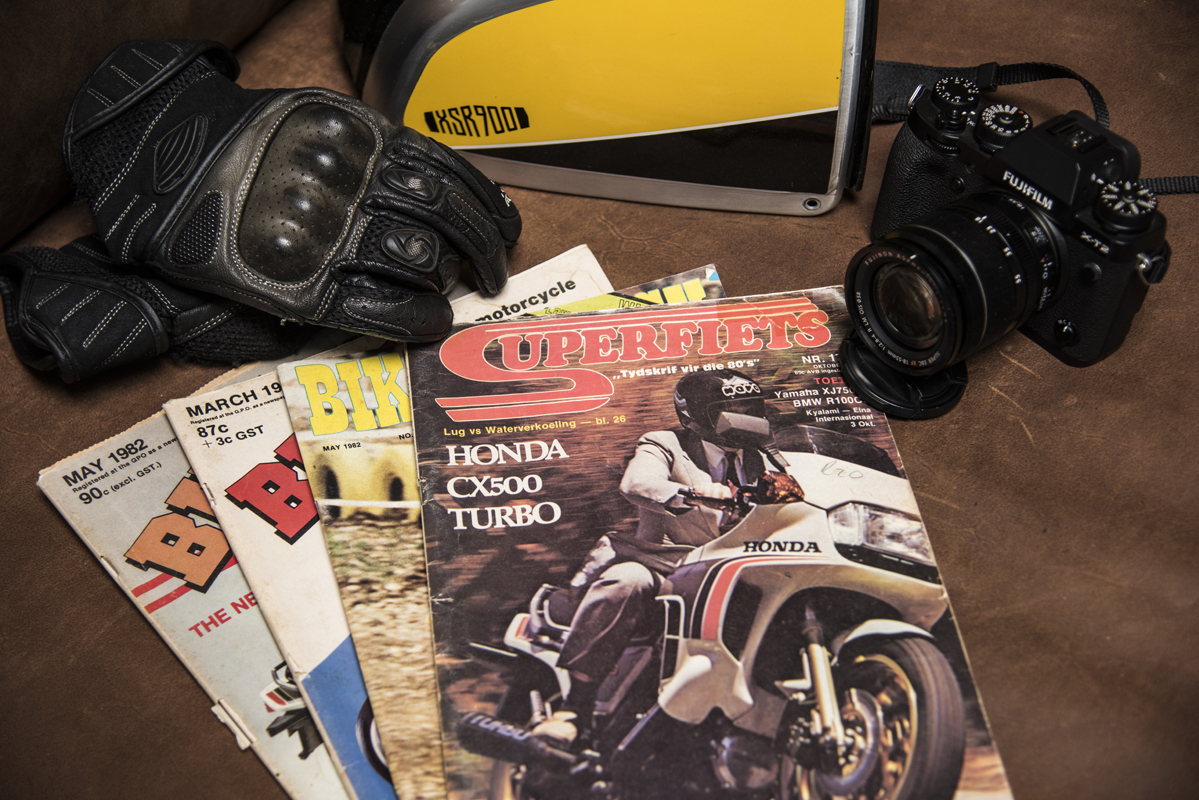
Maybe it’s just an age thing when you find your mind wandering back to times gone by. It’s just that living through the bike scene in SA in the late 1970s and early 1980s was truly special. To such an extent that it is hard to even imagine or visualise what it was like. Bike sales were booming. Dealers had the full range of bikes built by their factory on display, so we were spoiled for choice. Roads were billiard table smooth, traffic volumes were virtually non-existent by today’s standards, petrol was 47c/litre and weekend trips to “ET” were regular occurrences. With the industry booming, sponsors were falling over themselves to get a piece of the action. The race scene, for both road racing and off-road racing, was absolutely rocking.
Take a stroll with me back through time as we go back over 40 years and relive one of the great road racing events in SA that played out in 1982. You may then better understand what it was like to ride bikes in the ’80s.
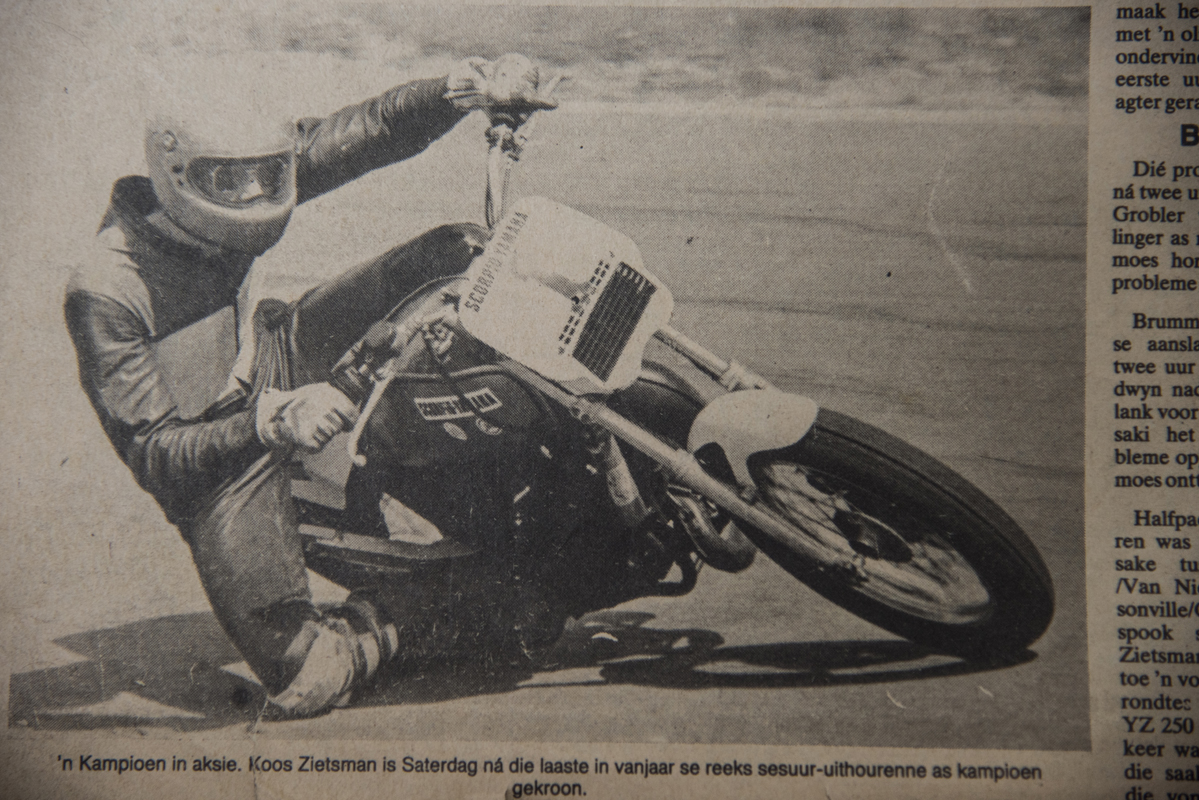
It would not be fair to even talk about motorcycle racing in 1982 without honouring a man who was a driving force and made an absolutely massive contribution to motor racing in SA over that period. Bruce Joelson, MD of Elna, the sewing machine manufacturer. Bruce pumped huge funding into motorsport and motorcycle racing in particular. He was the title sponsor for the Elna Superbike International, held at Kyalami on the 3rd of October 1982.
The day’s programme was across five classes. Formula 1 (Modified Superbikes), Unlimited Superbikes, 750 Class, 550 Class and 250 and 125 Racing Class. The International Unlimited Superbike riders team was comprised of Peter Clifford (Britain-Suzuki), Kork Ballington (SA-Kawasaki), Joey Dunlop (Ireland-Honda) and Ron Haslam (Britain-Honda). 750 Class International riders were Gustav Reiner (Germany-Yamaha), Jeff Sayle (Australia-Kawasaki), Jon Ekerold (SA-Yamaha). 550 Class International riders Mick Grant (Britain-Ducati Pantah).
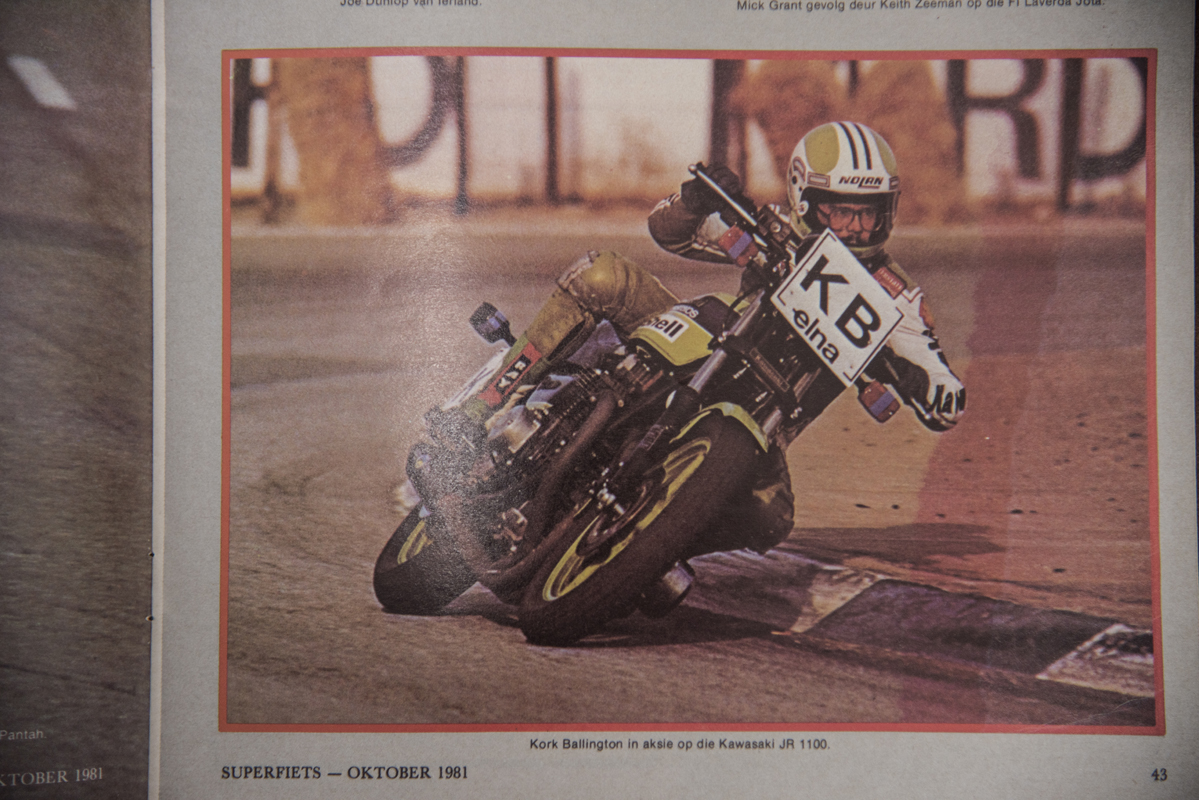
Local aces taking on the International stars were, in Unlimited Superbikes, Mike Crawford, the newly crowned SA Superbike Champion (Honda), Rod Gray (Honda), Dave Petersen (Suzuki), Brett Hudson (Kawasaki). 750 Class riders were SA Champ, Ant Fourie (Kawasaki), Roy Minster (Honda), Frans Maritz (Suzuki) and Keith Petersen (Ducati). 550 Class was Kevin Hellyer (Kawasaki).
Taking a closer look at the bikes. The Superbike Honda’s were the CB1100Rs, which were really factory-built production race bikes. The Honda came standard with a half fairing which, whilst great for the road, actually slowed the bike down as it was not great aerodynamically, so they got chucked off for racing. Honda later fixed this with the fully faired RC and RD models. Kawasaki responded with their Moriwaki-tuned KZ1100 JR, a wickedly quick modified successor to the Eddie Lawson Replica.
The Suzuki of the day was the 1100 Katana, enjoying its first race outing. The big Kat came in two variants. One with cast wheels and cv carbs, the other a homologation special with special light wire wheels and smooth bore carbs. We knew how to bend the rules in the ’80s, haha. 750s were Honda CB750Fs, Suzuki GSX 750s and Yamaha XJ750s, the only shaft-driven bike in the field. The giant killer of the 750 class was undoubtedly the strong and good-handling Ducati Pantah 600. Suffice it to say no street Pantah could run with a Jap 750. On the racetrack, it was a different story. Ricardo Frisoli, the Chief technician at Continental Motorcycles, the Ducati Importer of the day, prepared the Pantahs. Ricci knew just how to make those little Duc’s work.
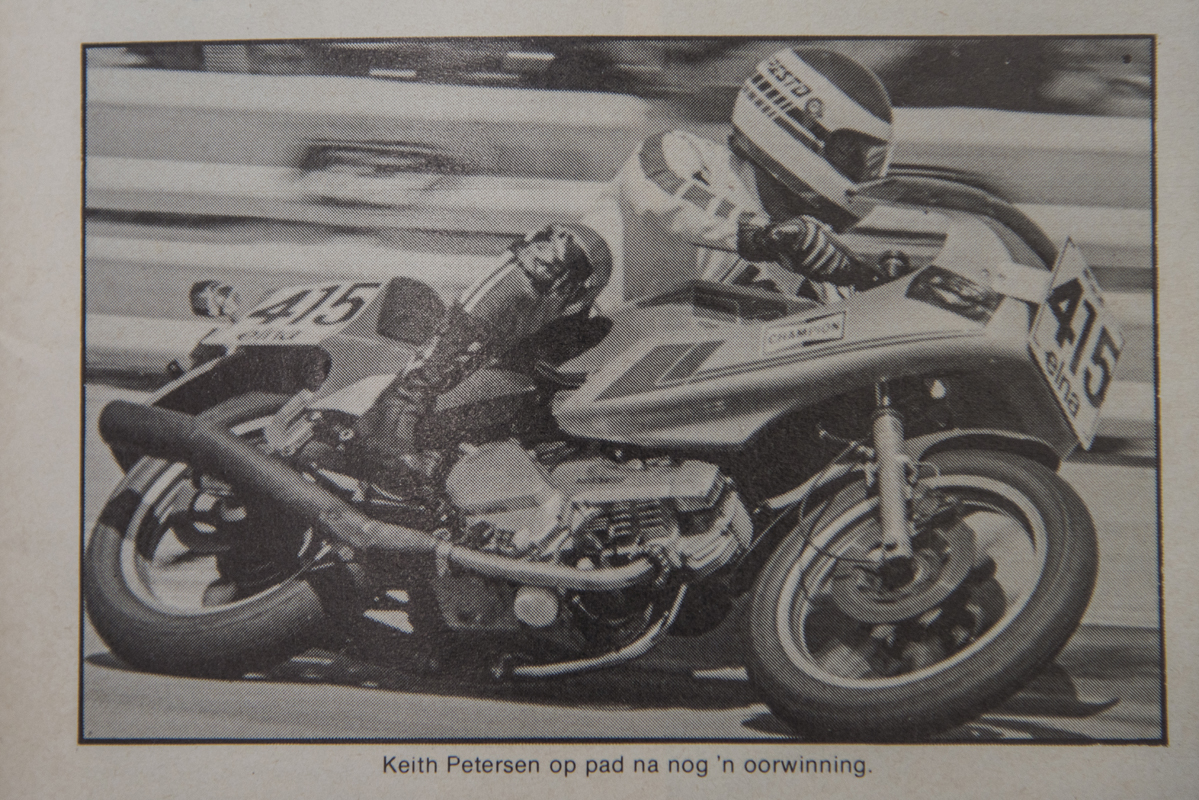
Formula 1 gave you the freedom to pretty much mod to your heart’s content with the only restriction being not increasing engine size. Joe Van Altena, or JVA as he was known, dominated this class on a bike that he prepared himself. Known as “the JVA Special”, it was a fully faired 1100 Kawasaki which had a serious turn of speed. The Formula 1 race was first up, with the field spiced up by some of the international riders on their Superbikes. In truth, it was a one-horse affair, with JVA clearing off from the start and disappearing into the distance, setting a new lap record of 1 min 33,56.
This event ran on the “old” Kyalami circuit. The track ran clockwise as opposed to Kyalami as we know it today. “Leeuwkop” was the corner which was at the highest point of the circuit and preceded a run down a straight, through “the kink” and over the start/finish line and downhill to “Crowthorne” corner, a right-hander. To get some perspective on speed, a well-tuned Kawasaki Z1 would run around 200 km/h, at best, down the straight. JVA’s “Special” by comparison, blitzed the straight at a phenomenal 253,06 km/h during the Formula 1 race.
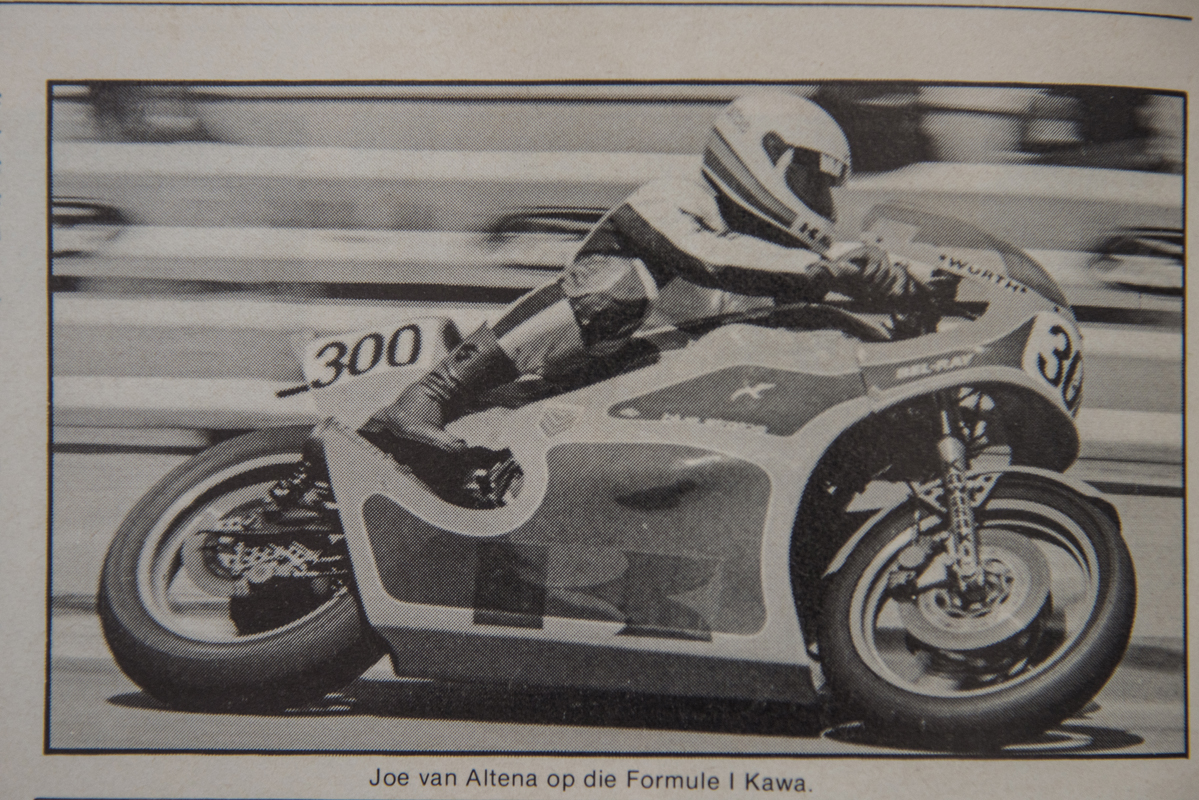
The bike obviously made wicked power but was also aided by a comprehensive full-fairing. Not too shabby for 1982! The bike was immaculately turned out in Kawasaki factory racing green and blue livery. Dave Petersen’s spanking new Shell Suzuki Katana finished in second spot, with the big Kat managing a respectable 239,79 km/h top end. Blue Stratos rider Brett Hudson, who started the race from pole, slotted his Moriwaki Kawasaki Z1100 into third after a race-long scrap with Dave. The Kawi howled down the straight at an impressive 238,02 km/h. Dave Wooley, on his stock Honda CB1100R, finished in 4th, with the Honda clocking a respectable 237.40 km/h.
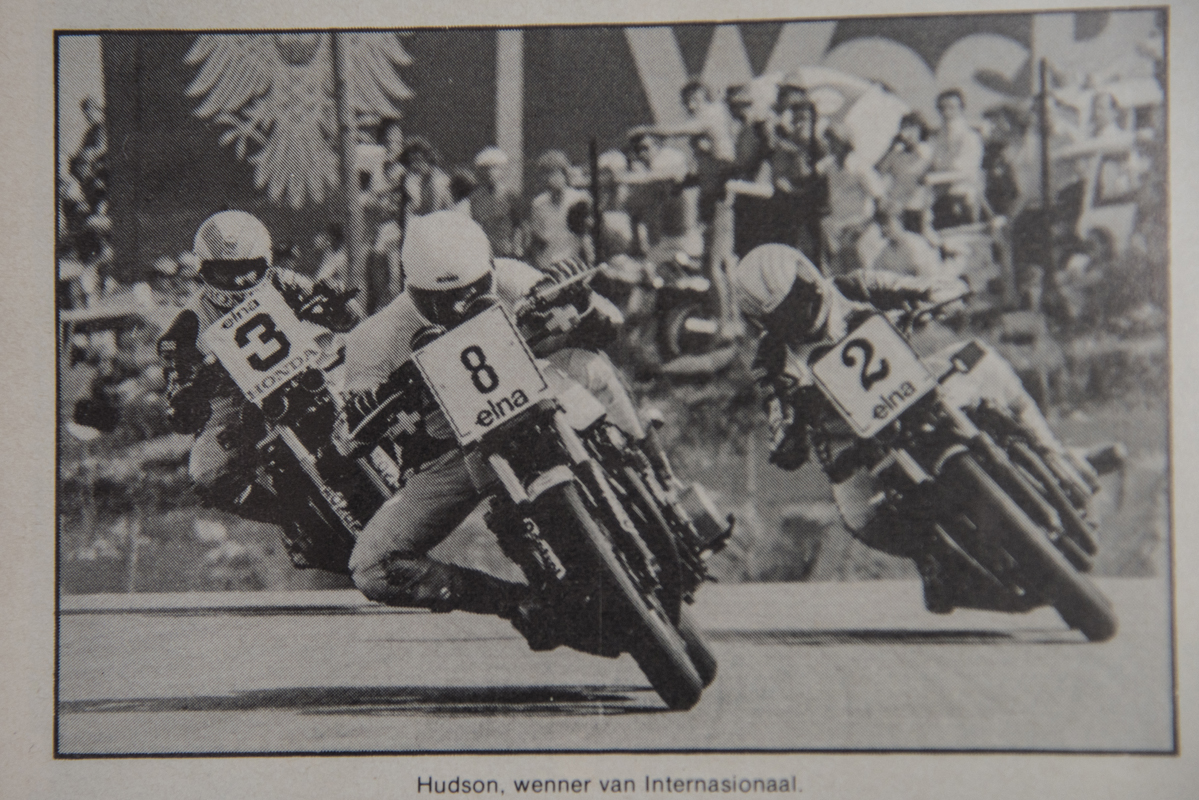
Other interesting entrants were Keith Zeeman, on a fully faired Laverda Jota. The Italian triple sounded very different to the triples we have today, sounding almost “off-song”. It had a decent turn of speed though, clocking 246,6 km/h, right up there with the best of them. Keith brought the Jota home in 5th place.
Now here is another interesting thing about racing in the ’80s. The fields were huge, indicative of a booming motorcycle industry and a vibrant economy. 32 motorcycles lined up for the Formula 1 race. In fact, numbers had to be restricted by only allowing riders who qualified within 110% of the man in pole position to be able to enter the race.
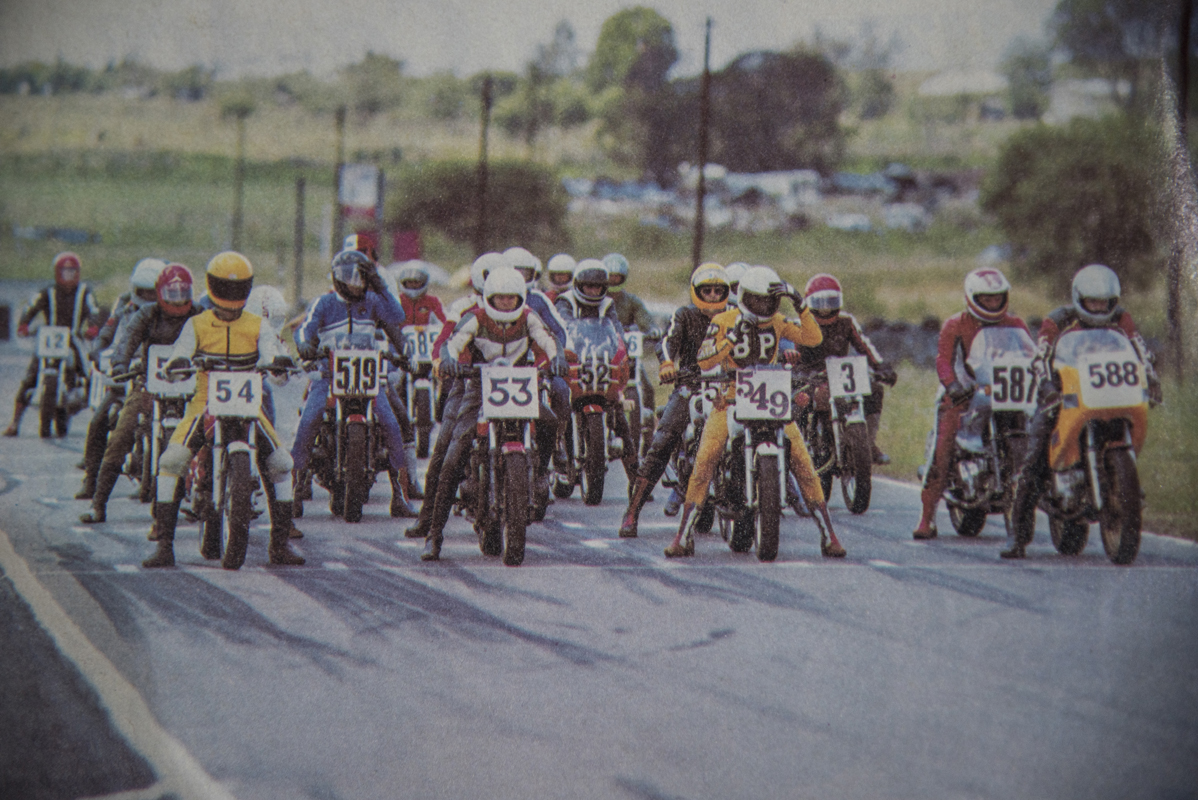
The International Unlimited Superbike class had 24 riders line up for the start, the 750 class 34 and the 550 class 24. Even the 250 and 125 Racing classes had 15 bikes entered. A variety of Yamaha TZ 250s and 125s as well as a couple of Honda 125s and a solitary Spondon Rotax. The faster TZ 250s and the Spondon were good for over 226 km/h, with the fastest 125 by far, at 183,55 being Curly Elliot’s Honda. Not surprising perhaps considering that Curly was the technical boss at Honda SA.
Next up was the 550 cc Class and what a cracker it was! Robbie Petersen on his Kawasaki GPz550 smoked off the line and into an early lead. It quickly became a family affair as his big brother Keith soon assumed the lead on his debut ride on a Ducati Pantah 500. Making the most of the superb handling and braking ability of the little Bologna Bullet, Keith simply disappeared out of sight. It wasn’t long before the podium got closed down as a Ducati benefit, with the two Richards, Porter and Prince moving into second and third respectively. John Sneesby on a Laverda Montjuic finished in fourth, making the first four bikes an Italian affair ahead of “the Italian Dutchman” Mario Rademeyer, on a Yamaha XJ550. Kevin Hellyer on a GPz550 edged Robbie Petersen into the 6th spot, with the first International rider, Mick Grant, finishing 8th on his Ducati Pantah.

The 750 Class race was keenly anticipated, with some top International riders in the fray. Two laps into the race and it was again the star of the day, Keith Petersen on a 600 Pantah who smoked the field. To best understand how handling and braking trumps horsepower, is to note the top speeds recorded by the leading riders. Australian Jeff Sayle, who finished second to the flying Petersen, recorded a top end of 212,89 km/h on his Kawa Z750, whereas Keith could only coax the Pantah to 202,07 km/h. Despite this top-end deficit, Petersen managed to ride away from the field and clinch a convincing win. Another Aussie, Rob Phyllis, bagged 3rd on his GSX 750 Suzuki, pipping local ace Rod Gray into fourth.
The 250 and 125 Racing class would probably have gone to Keith Petersen, had he not sold his TZ shortly before the race to Robert Larney, who brought the ex-KP TZ home in 3rd. The rampant winner was Kevin Hellyer, also a race bike specialist, ahead of Mario Rademeyer in 2nd. Curly Elliot beat all the 125s and a few TZ 250s to win the 125 class and record 8th overall. Now it was on to the big race, the Unlimited Superbike race with the top Saffers lining up against some of the best riders on the planet. Would Mike Crawford, who had already clinched the SA Champs in this class prevail, or would the likes of “Rocket” Ron Haslam or Joey Dunlop strut their stuff and show him the way around?

Rod Gray led for the first three laps on his big Honda CB1100R, despite Brett Hudson passing the Honda down the straight, only for Gray to out-brake the Kawasaki Z1100 JR into Sunset, resuming the lead around the back of the circuit. Dave Petersen on the new Katana, which was literally only uncrated two days before the race, was giving an incredible account of himself. He was circulating in third ahead of Dave Wooley from Mike Crawford, who was, in turn, struggling to hold off Brit Mick Grant on a quick JR Kawi. Dave Woolley was having the ride of his life. On around lap 8, he assumed the lead and it was game over. The two Natal boys, Woolley and Gray took their Honda’s home in 1st and 2nd with Brett Hudson on his JR in 3rd. Dave Petersen brought the Katana home in a very creditable 4th with the National Champion Mike Crawford in 5th. The best of the International riders was next, with Ron Haslam on his Honda ahead of Mick Grant on his JR.
All of this excellent day’s racing played out before a crowd of around 60 000 cheering spectators. Can you imagine the buzz around the circuit as drama upon drama unfolded? For weeks before and after the race every biking conversation was dominated by this spectacular event. I am certain that many sales followed these races as “what wins on Saturday gets bought on Monday”.
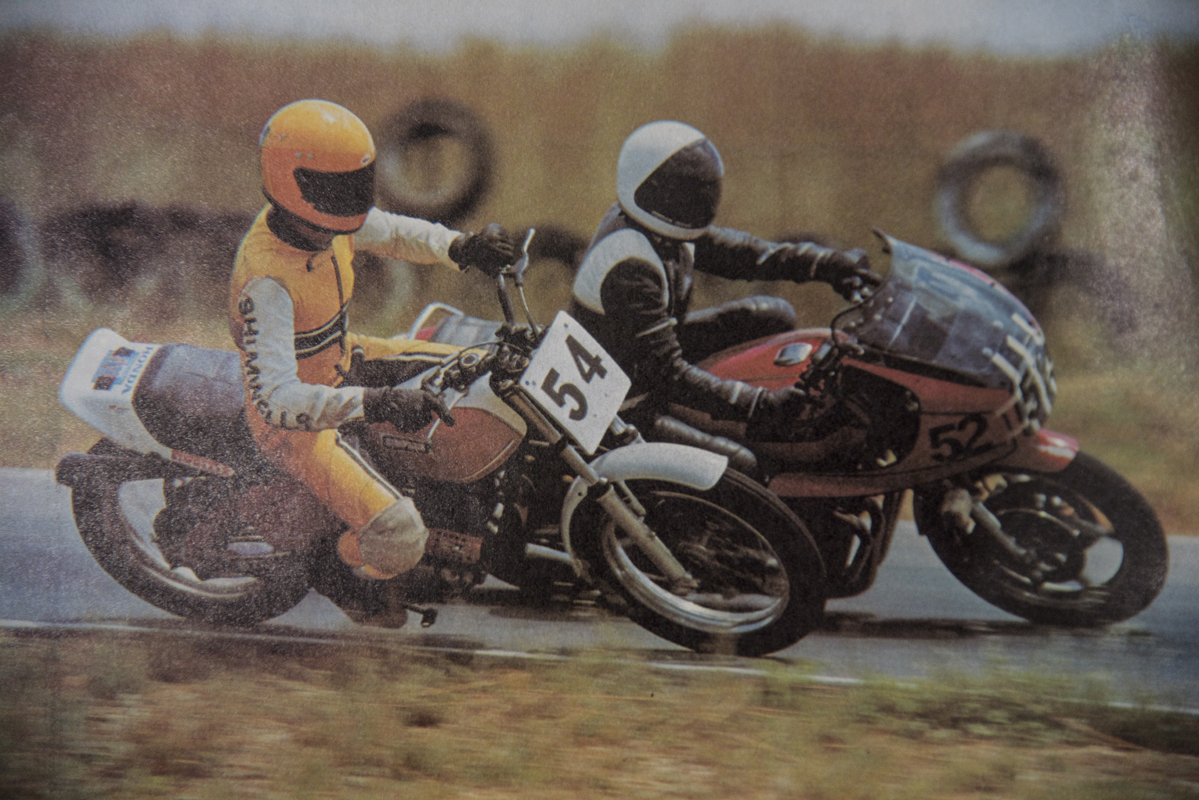
Standout performances, with the wisdom of hindsight, were that of Keith Petersen and his brace of Ducati’s and obviously the SA boys who thrilled their fans by dominating the International and showed the International stars a clean pair of heels. Looking back at these results from 1982, I am gobsmacked to see how rapid the bikes of that era actually were. True speeds in excess of 235 km/h, as recorded by the quicker 1100s, are really fast considering that they would be indicating around 250 km/h, on a racetrack and that on “naked” bikes. I remind you guys that this was 41 years ago!
Ducati was serving notice of incredible race results to come, especially in the hands of Robbie and Keith Petersen (who incredibly sadly would lose his life racing a Pantah at Kyalami). Again, with the wisdom of hindsight, we see how the Italian factory has dominated World Superbike racing for years and now is doing the same in MotoGP. It is hard to imagine what the motorcycle racing landscape will look like in 40 years time, but I cannot imagine that it can in any way trump the amazing ’80s.
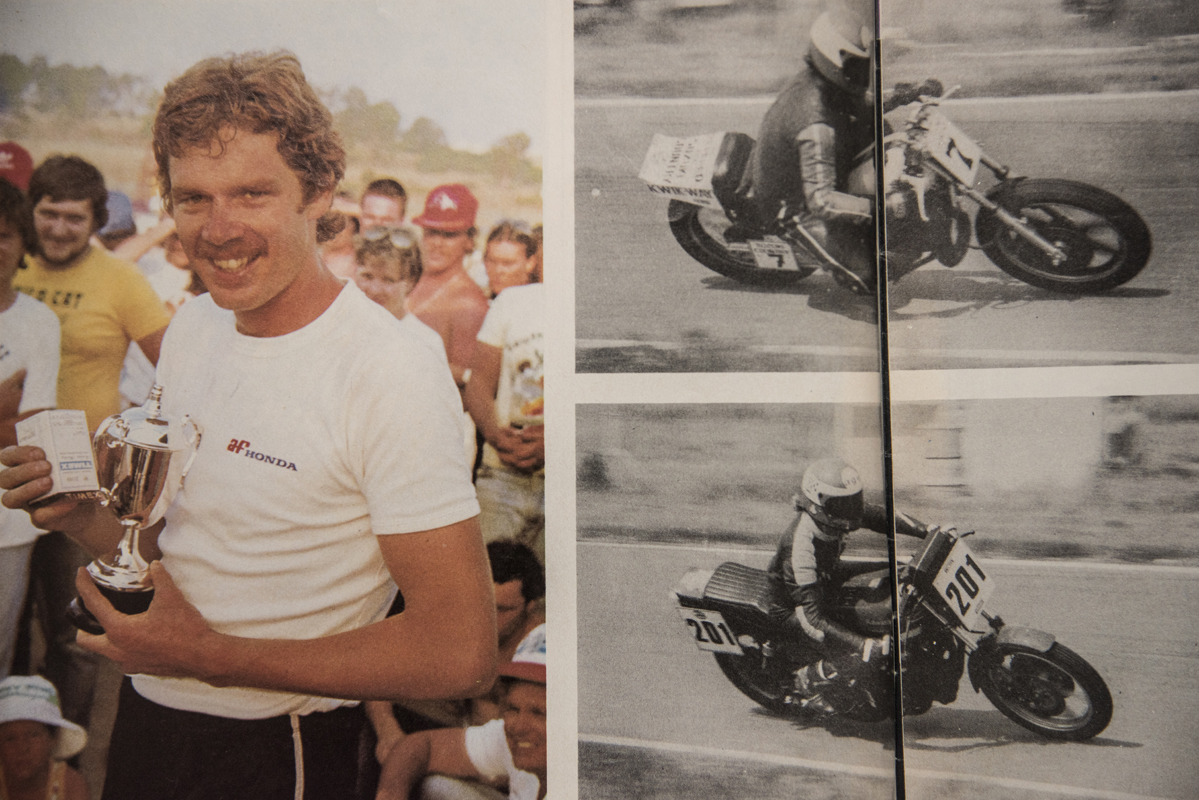
As a parting shot, consider for a moment what we paid for bikes back in 1982. I know that our salaries were a fraction of what they are today, but somehow bikes seemed so much more affordable back then. A Honda CB1100 R could be had for R6 500, a Kawasaki GPZ1100 GP – R4 795 and a new Suzuki 1100 E a mere R4 399. At the other end of the spectrum, a C50 Step-through Honda would set you back R595. The most expensive BMW was their R100RT at R6 650. The legendary Yamaha XT500 retailed for R2 385. Given what good examples fetch today, it would have been worth buying a few as an investment to sell still crated. Boy, is it not great to dream? Those were heady days indeed!





